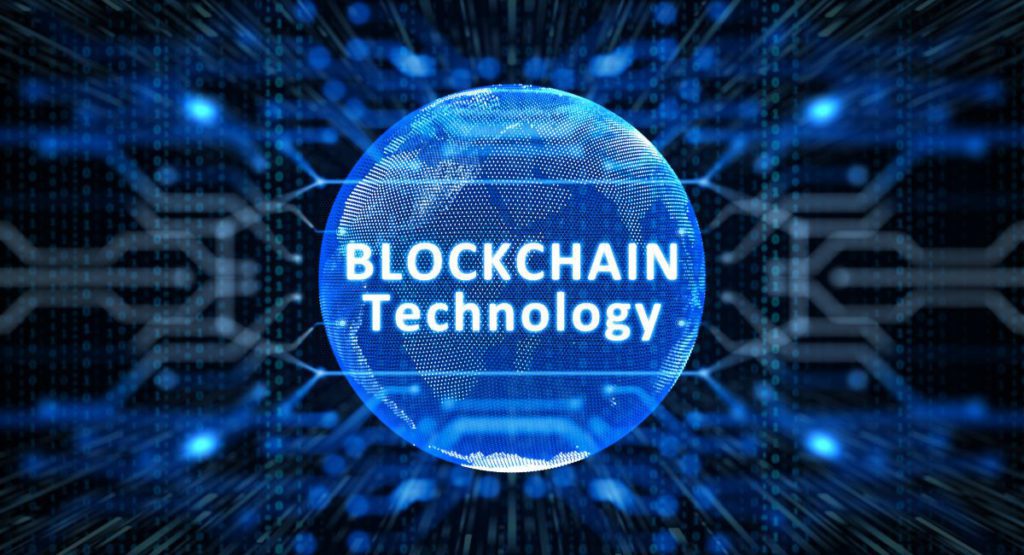What Are Blockchain Bots And How Do They Work?
The integration of artificial intelligence (AI) and blockchain technology has given rise to a fascinating intersection that holds great promise for the future of automation and decentralized systems. At the heart of this convergence are blockchain bots—intelligent agents that leverage blockchain capabilities to perform a myriad of tasks. In this comprehensive article, we delve into the world of blockchain bots, examining their functionalities, applications, and the impact they have on various industries.
Understanding Blockchain Bots:

Blockchain bots, also known as crypto bots or smart contract bots, are autonomous agents that operate on blockchain networks, executing predefined tasks through smart contracts. These bots harness the decentralized and transparent nature of blockchain technology to perform a range of functions, from automated trading to decentralized finance (DeFi) protocols and beyond.
1. Trading Bots:
One of the prominent use cases for blockchain bots is in the realm of cryptocurrency trading. Trading bots operate on blockchain networks, executing buy or sell orders based on predefined algorithms and market conditions. These bots can analyze vast amounts of data, identify trading opportunities, and execute transactions with speed and precision, leveraging the efficiency and transparency of blockchain technology.
2. Decentralized Finance (DeFi) Bots:
The decentralized finance landscape has witnessed the proliferation of blockchain bots, playing a pivotal role in various DeFi protocols. These bots can automate tasks such as yield farming, liquidity provision, and portfolio management. By interacting with smart contracts on decentralized platforms, DeFi bots contribute to the seamless and efficient functioning of decentralized financial ecosystems.
3. Smart Contract Execution Bots:
Blockchain bots are designed to execute actions on smart contracts autonomously. These actions could range from simple tasks, like triggering a payment upon the fulfillment of certain conditions, to more complex operations, such as managing decentralized autonomous organizations (DAOs) through smart contract executions. This capability streamlines processes and ensures the trustless execution of agreements.
4. Data Analysis and Reporting Bots:
Blockchain networks generate vast amounts of data, and bots can be employed to analyze and report on this data in real-time. These bots can provide insights into blockchain transactions, token movements, and network health. The transparency of blockchain technology allows for accurate and verifiable reporting, making these bots valuable tools for data analytics in the blockchain space.
5. Supply Chain Management Bots:
In industries such as logistics and supply chain, blockchain bots are utilized to streamline processes and enhance transparency. These bots can automate tasks related to tracking and verifying the provenance of goods, ensuring the integrity of supply chain data on an immutable blockchain ledger.
6. Identity Verification Bots:
Blockchain bots can play a role in identity verification processes by interacting with decentralized identity protocols. These bots contribute to the creation and validation of decentralized identities, providing a secure and privacy-centric approach to identity verification.
7. Governance and Voting Bots:
Decentralized governance relies on the participation of token holders in decision-making processes. Bots can be employed to facilitate governance functions, automating voting processes and ensuring the execution of decisions made by the community. This enhances the efficiency and inclusivity of decentralized governance mechanisms.
Also, read – Top 10 Ways Blockchain And Metaverse Help With Global Warming
Understanding How Blockchain Bots Operate

Blockchain bots represent a fascinating intersection of artificial intelligence and decentralized technology. These intelligent agents leverage the capabilities of blockchain networks to automate various tasks, ranging from cryptocurrency trading to executing smart contracts. In this comprehensive exploration, we unveil the mechanics of how blockchain bots work, providing insights into their functionalities, architectures, and the impact they have on the broader blockchain ecosystem.
1. Smart Contracts and Decentralized Automation:
At the core of blockchain bot functionality lies the interaction with smart contracts. Smart contracts are self-executing contracts with the terms of the agreement directly written into code. Blockchain bots leverage these smart contracts to automate predefined tasks, eliminating the need for intermediaries and facilitating trustless and decentralized automation.
2. Task Execution through Smart Contracts:
Blockchain bots operate by interacting with smart contracts deployed on blockchain networks. These contracts contain predefined rules and conditions that, when met, trigger specific actions. For instance, in the context of decentralized finance (DeFi), a blockchain bot may execute a smart contract to automatically lend or borrow funds based on market conditions and predetermined parameters.
3. Trading Strategies and Algorithms:
In the realm of cryptocurrency trading, blockchain bots employ sophisticated algorithms and trading strategies. These algorithms analyze market data, price trends, and various indicators to make informed trading decisions. Trading bots can execute buy or sell orders, manage portfolios, and implement risk management strategies autonomously, reacting swiftly to market fluctuations.
4. Decentralized Exchanges and Liquidity Provision:
Blockchain bots play a pivotal role in decentralized exchanges (DEXs) by providing liquidity to trading pairs. Liquidity provision involves depositing funds into liquidity pools, and blockchain bots automate this process by interacting with the respective smart contracts. This facilitates efficient trading on DEXs and allows users to swap assets seamlessly.
5. Oracle Integration for Real-World Data:
Blockchain bots often require access to real-world data to make informed decisions. Oracles, external systems that provide off-chain information to smart contracts, play a crucial role in this aspect. Bots can integrate with oracles to fetch real-time data, such as price feeds, news updates, or any external information required for decision-making within smart contracts.
6. Decentralized Autonomous Organizations (DAOs):
In the governance of decentralized networks, blockchain bots can participate in decision-making processes within decentralized autonomous organizations (DAOs). These bots cast votes on proposals based on predefined criteria, contributing to the governance of the network. DAOs benefit from the automated participation of bots, ensuring a diverse and active engagement in the decision-making process.
7. Security through Cryptographic Signatures:
To interact with smart contracts securely, blockchain bots utilize cryptographic signatures. Each transaction initiated by a bot is signed with its private key, providing a cryptographic proof of authorization. This ensures the integrity and authenticity of transactions and prevents unauthorized access or manipulation.
8. Decentralized Identity and Authentication:
Blockchain bots may interact with decentralized identity protocols to establish secure and verifiable identities. Through these protocols, bots can authenticate themselves on the blockchain, enabling secure access to various services and smart contracts. Decentralized identity enhances the security and trustworthiness of bot interactions within the decentralized ecosystem.
9. Tokenomics and Incentive Structures:
In certain blockchain applications, bots operate within incentive structures defined by tokenomics. Economic incentives and penalties influence the behavior of bots, aligning their actions with the goals and sustainability of the network. Well-designed tokenomics ensure that bots contribute positively to the decentralized ecosystem.
10. Integration with External APIs and Services:
Blockchain bots may integrate with external application programming interfaces (APIs) and services to access additional functionalities. This can include fetching data from external sources, interacting with legacy systems, or leveraging external services to enhance their capabilities within the decentralized environment.
The operation of blockchain bots is intricate and multifaceted, relying on the execution of smart contracts, sophisticated algorithms, and secure cryptographic mechanisms. These bots automate tasks across various domains, from decentralized finance to governance and identity management. As the blockchain space continues to evolve, the role of blockchain bots is set to expand, driving innovation, efficiency, and autonomy within decentralized ecosystems. Understanding the mechanics of how blockchain bots work is pivotal for navigating the evolving landscape of decentralized technologies.
📢 Nerds, we are geared up and ready!
It’s time to put the ETH minting bot to the test. 🔥This bot facilitates the minting of the latest hyped NFT collections from the #ETH blockchain.
We’ve designed a user-friendly interface, ensuring that everyone can easily utilize the bot… pic.twitter.com/TNpaknSlCO— Rekt Nerds 🤓🗝️💲 (@RektNerdsNFT) November 29, 2023

Conclusion:
In conclusion, blockchain bots represent a transformative force at the intersection of AI and blockchain technology. From revolutionizing cryptocurrency trading to automating complex decentralized finance processes, these intelligent agents are reshaping industries and redefining the possibilities of decentralized systems. As the development and adoption of blockchain bots continue, the decentralized future they contribute to holds the promise of increased efficiency, transparency, and accessibility across a wide range of applications. The journey into the realm of blockchain bots is only just beginning, and the innovations they bring are sure to shape the future landscape of automation and decentralized technology.
Stay informed with daily updates from Blockchain Magazine on Google News. Click here to follow us and mark as favorite: [Blockchain Magazine on Google News].
Get Blockchain Insights In Inbox
Stay ahead of the curve with expert analysis and market updates.
latest from tech
Disclaimer: Any post shared by a third-party agency are sponsored and Blockchain Magazine has no views on any such posts. The views and opinions expressed in this post are those of the clients and do not necessarily reflect the official policy or position of Blockchain Magazine. The information provided in this post is for informational purposes only and should not be considered as financial, investment, or professional advice. Blockchain Magazine does not endorse or promote any specific products, services, or companies mentioned in this posts. Readers are encouraged to conduct their own research and consult with a qualified professional before making any financial decisions.

 Bitcoin
Bitcoin  Ethereum
Ethereum  Tether
Tether  XRP
XRP  Solana
Solana  Dogecoin
Dogecoin  USDC
USDC  Lido Staked Ether
Lido Staked Ether  Cardano
Cardano  TRON
TRON  Avalanche
Avalanche  Toncoin
Toncoin  Chainlink
Chainlink  Wrapped stETH
Wrapped stETH  Shiba Inu
Shiba Inu  Wrapped Bitcoin
Wrapped Bitcoin  Sui
Sui  Hedera
Hedera  Stellar
Stellar  Polkadot
Polkadot  WETH
WETH  Bitcoin Cash
Bitcoin Cash  LEO Token
LEO Token  Hyperliquid
Hyperliquid  Litecoin
Litecoin  Uniswap
Uniswap  Pepe
Pepe  Wrapped eETH
Wrapped eETH  NEAR Protocol
NEAR Protocol  Ethena USDe
Ethena USDe  USDS
USDS  Aave
Aave  Aptos
Aptos  Internet Computer
Internet Computer  Cronos
Cronos  POL (ex-MATIC)
POL (ex-MATIC)  Mantle
Mantle  Ethereum Classic
Ethereum Classic  Render
Render  Monero
Monero  WhiteBIT Coin
WhiteBIT Coin  Bittensor
Bittensor  MANTRA
MANTRA  Dai
Dai  Artificial Superintelligence Alliance
Artificial Superintelligence Alliance  Arbitrum
Arbitrum  Filecoin
Filecoin 



